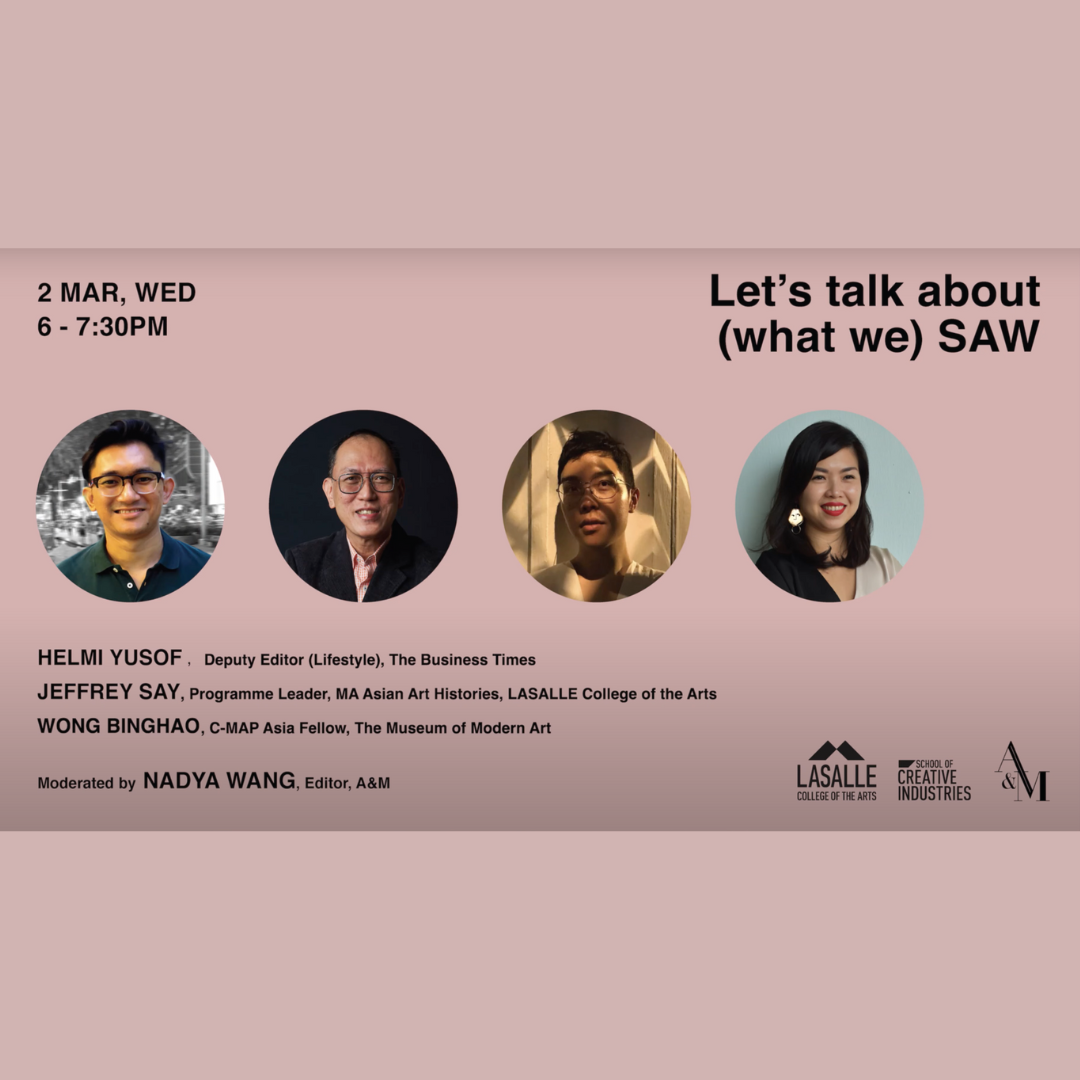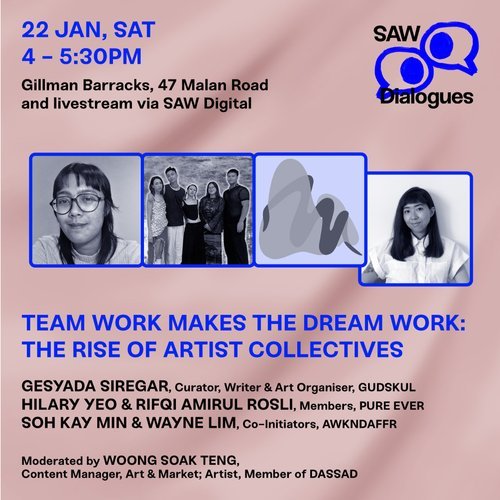SAW Art Symposium | Grounded and Ready for Take Off: Flight Plans for 2021
Yanyun Chen, Khai Hori, Adele Tan, Josephine Kelliher
By Lara Tan
Key points:
After the initial rush to work with the digital, producers are becoming increasingly mindful about what the medium can offer that is of value
The rhythms of production and methods of collaboration have changed due to shifting dynamics among artists, institutions and other creatives
Openness and adaptability are necessary for a more robust art ecosystem moving forward.
Art & Market presented the panel discussion ‘Grounded and Ready for Take Off: Flight Plans for 2021’ to conclude Singapore Art Week Art Symposium, produced by Plural Art Mag, and supported by the National Arts Council. It saw a refreshing discussion about the lessons learned from working in unprecedented circumstances in the past year, and how they can be used to shape the future of the arts ecosystem.
The panel featured Yanyun Chen, Artist and Academic, Khai Hori, Director and Partner, Chan + Hori Contemporary, Adele Tan, Senior Curator, National Gallery Singapore and Josephine Kelliher, Facebook Open Arts Lead EMEA & APAC. The session was moderated by Nadya Wang, Founder and Editor, Art & Market.
Here are the main takeaways:
After the initial rush to work with the digital, producers are becoming increasingly mindful about what the medium can offer that is of value. Given the oversaturation of digital content, a thread running through the discussion was the need to carefully consider what will be produced. Yanyun said that since she was already making digital content before the pandemic, she was concerned with whether the projects she was putting out were valuable and meaningful. Adele echoed this sentiment, adding that it was important to not fetishise the digital as a tool, and to remember the importance of a tangible physical experience. Josephine found that the digital has not just been a tool for presentation, but has also allowed audiences to discover new art.
The rhythms of production and methods of collaboration have changed due to shifting dynamics among artists, institutions and other creatives. Nadya first raised the observation that relationships between individuals and entities were closer than before, with parties more willing to collaborate and learn from each other. Khai shared that while he and his team have continued to work with artists and other creatives, he has also been paying more attention to what is happening outside the art world, particularly in the social and political sphere. He cautioned against the growing obsolescence of galleries and their role as mediators as more narratives spring up about alleged unethical practices of artistic organisations. Speaking from her own experience, Yanyun noted that she has taken on multiple roles in addition to being an artist, and still sees the value in working with external parties, including galleries, to navigate unfamiliar aspects of the art market. Adele raised several questions about how much collaboration actually occurs at the institutional level, and believes that there needs to be more questioning about the levels of exchange between artists and institutions.
Openness and adaptability are necessary for a more robust art ecosystem moving forward. When asked about their goals and expectations moving forward, all panellists reiterated the necessity to remain open and adaptable with their plans. Yanyun has appreciated being able to slow down and consider the materials she had to work with, as opposed to merely chasing deadlines. Khai is not yet satisfied with the work done thus far and wants to delve into broader creative fields and take on meaningful projects that are relevant to the larger society. Adele stated that she would like to explore the idea of accessibility and is looking at other apertures of connections with various communities. Josephine reflected that 2021 is a year for her to stay curious, as ideas change with the projects that she leads, and also to continue critical conversations with artists and creatives.
All in all, the panel observed that the changing pace and methods of artistic production and reach have created opportunities for them to think more critically about the projects they engage in, and the collaborators they work with, to more consciously make a positive impact on their immediate and wider communities.
To watch the full recording of SAW Art Symposium | Grounded and Ready for Take Off: Flight Plans for 2021, please log in with your SISTIC account at this link.














